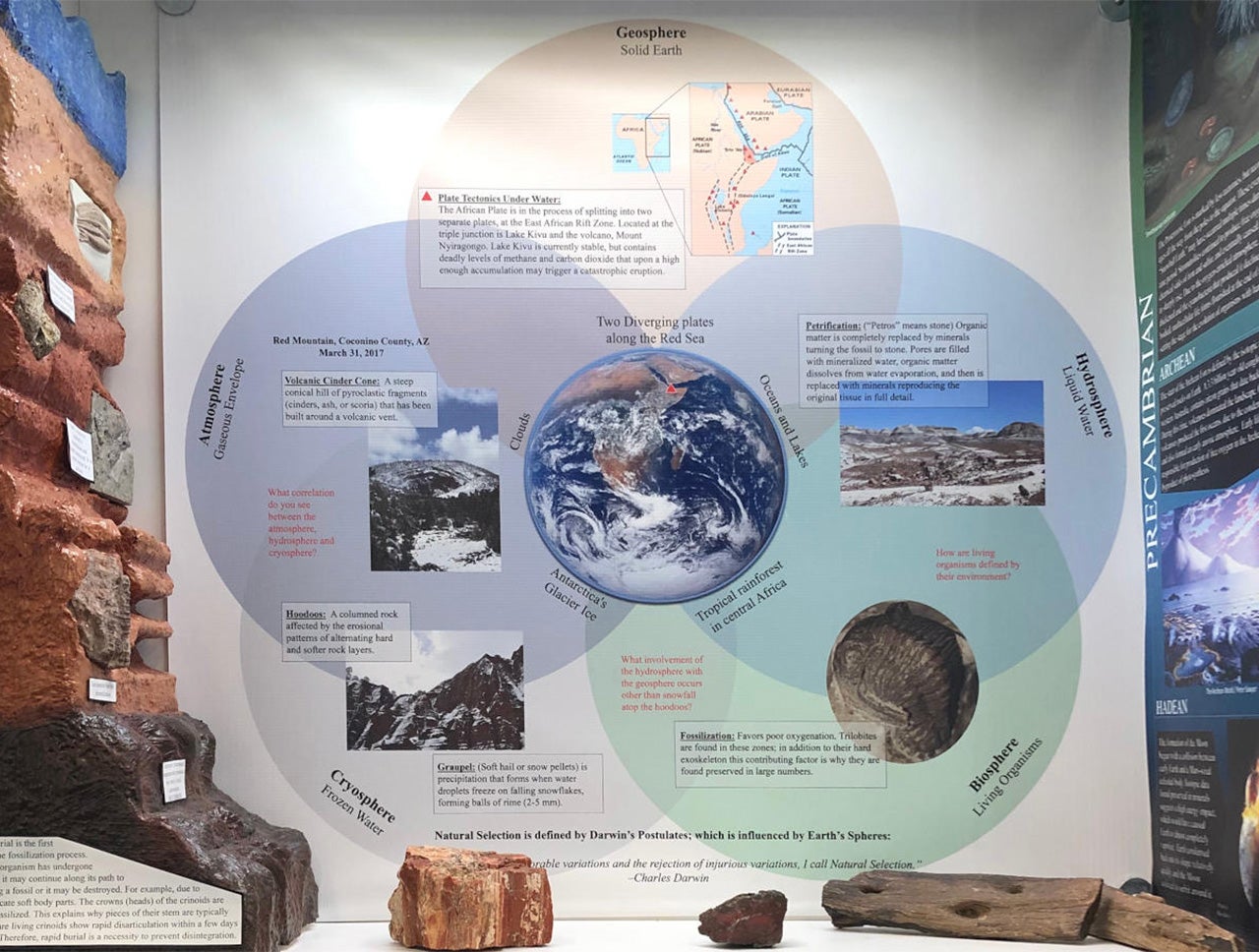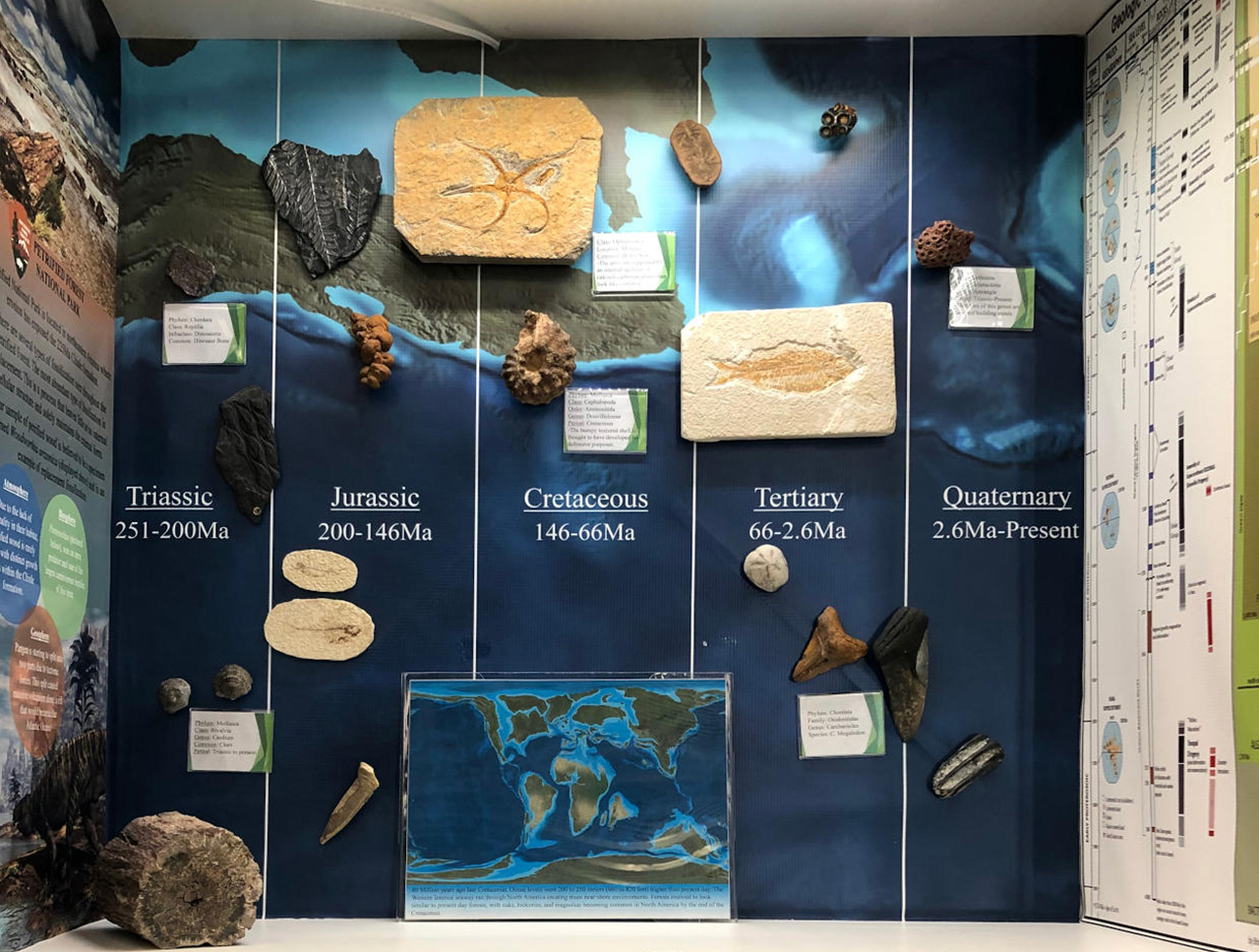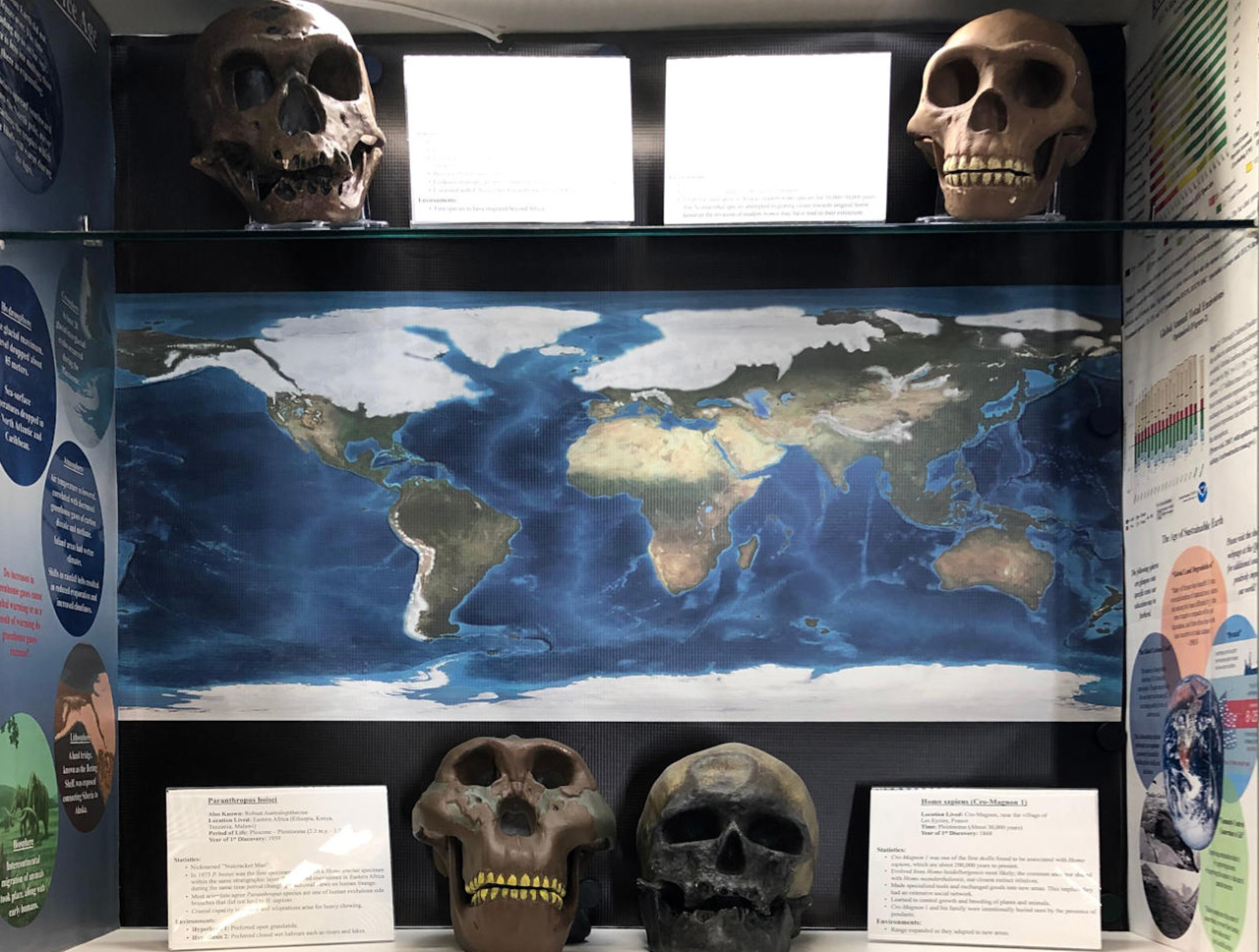The Age of a Sustainable Earth (TASE)
The Age of a Sustainable Earth is a curated fossil collection located in NS 406 on the Scottsdale Community College campus.
This project curated fossil collections to illustrate past environmental events and highlight how they relate to contemporary environmental issues. Specific topics displayed included paleogeography, mass extinctions, and interactions among the biosphere, atmosphere, cryosphere, hydrosphere, and geosphere. While individual displays focus on various aspects of topics, together the displays focus on how past events can inform current environmental policy. Modern museums aspire to have displays that contain more temporary thematic exhibits, versus permanent features that display collections as reference works. Production of display cases at Scottsdale Community College were therefore curated with the intent of acting as a mix of both permanent and temporary exhibition.
Project Team
Fossil identification, curation, and research conducted by Amber Petrie and Dylan Salam. Project management by Merry Wilson. Project analysis by Lisa Couty. Lab assistance by Sean Robinson. Personalized tour of the Petrified Forest by Cathy Lash.
Cabinet Descriptions
Cases were constructed around a theoretical framework focused on the interconnectedness of Earth processes:
- Left Cabinet: The interaction of the five spheres: geosphere, cryosphere, biosphere, atmosphere, hydrosphere. Independent and dependent variables between the spheres are discussed.
- Middle Cabinets: Arizona geology through time and global mass extinction events with a focus on linking specifically to Arizona geology where applicable. The majority of the cases highlight Arizona geology and specimen in a display that showcases paleogeographic change through time. Mass extinctions are embedded with review of the independent and dependent interactions between the spheres.
- Right Cabinet: Hominin evolution and migration are highlighted. The Pleistocene Ice Age is explored with the spheres’ interactions. Current research showing the extinction realities being faced today from the IUCN Red List of Threatened Species and NOAA Global Carbon Emissions is reviewed.
Each subsection has further information on specific topics related to each sphere.



